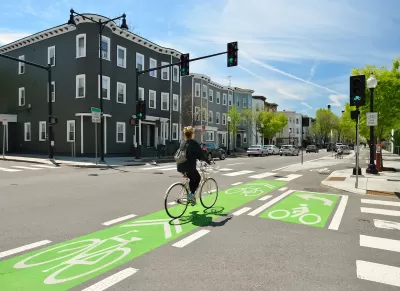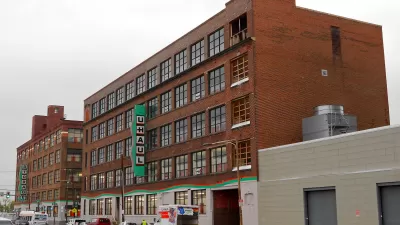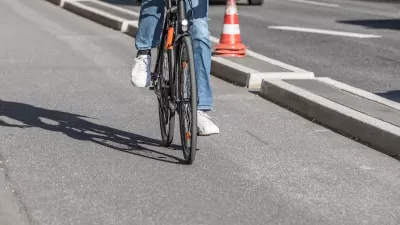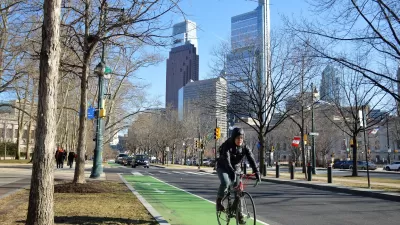The third edition of the nationally recognized road design guide includes detailed design advice for roads that prioritize safety and accessibility for all users.

A newly revised guide from the National Association of City Transportation Officials (NACTO) outlines best practices and recommendations for street design that prioritizes bikeways. “Endorsed by the U.S. Department of Transportation and recognized in federal law, the Urban Bikeway Design Guide is used by hundreds of municipalities, state DOTs, and regional agencies across the U.S. and Canada to design streets that are safe and accessible for people biking.”
The guide outlines how cities can easily and affordably implement safety and mobility improvements. “The new edition includes detailed policy, planning, and project development guidance to ensure connected bikeable streets become standard practice. It also shows how to center equity and access in every step of planning and implementing a bike network–addressing inequities caused by the transportation system and building collaborative partnerships with historically marginalized groups of residents.”
The newest edition acknowledges new types of mobility such as e-bikes and scooters and includes more detailed design practices that improve safety for all road users. The guide also offers advice in network planning, community engagement, and maintenance needs.
FULL STORY: NACTO Launches New Urban Bikeway Design Guide for the Next Generation of Innovative Cycling Infrastructure

Study: Maui’s Plan to Convert Vacation Rentals to Long-Term Housing Could Cause Nearly $1 Billion Economic Loss
The plan would reduce visitor accommodation by 25,% resulting in 1,900 jobs lost.

North Texas Transit Leaders Tout Benefits of TOD for Growing Region
At a summit focused on transit-oriented development, policymakers discussed how North Texas’ expanded light rail system can serve as a tool for economic growth.

Why Should We Subsidize Public Transportation?
Many public transit agencies face financial stress due to rising costs, declining fare revenue, and declining subsidies. Transit advocates must provide a strong business case for increasing public transit funding.

How to Make US Trains Faster
Changes to boarding platforms and a switch to electric trains could improve U.S. passenger rail service without the added cost of high-speed rail.

Columbia’s Revitalized ‘Loop’ Is a Hub for Local Entrepreneurs
A focus on small businesses is helping a commercial corridor in Columbia, Missouri thrive.

Invasive Insect Threatens Minnesota’s Ash Forests
The Emerald Ash Borer is a rapidly spreading invasive pest threatening Minnesota’s ash trees, and homeowners are encouraged to plant diverse replacement species, avoid moving ash firewood, and monitor for signs of infestation.
Urban Design for Planners 1: Software Tools
This six-course series explores essential urban design concepts using open source software and equips planners with the tools they need to participate fully in the urban design process.
Planning for Universal Design
Learn the tools for implementing Universal Design in planning regulations.
City of Santa Clarita
Ascent Environmental
Institute for Housing and Urban Development Studies (IHS)
City of Grandview
Harvard GSD Executive Education
Toledo-Lucas County Plan Commissions
Salt Lake City
NYU Wagner Graduate School of Public Service





























